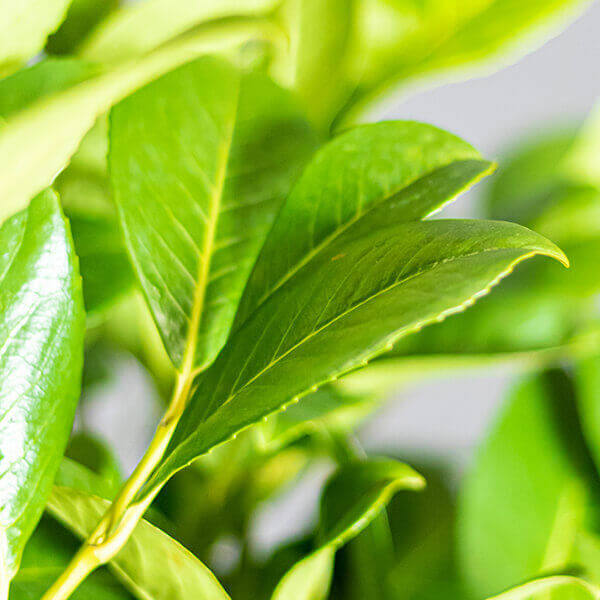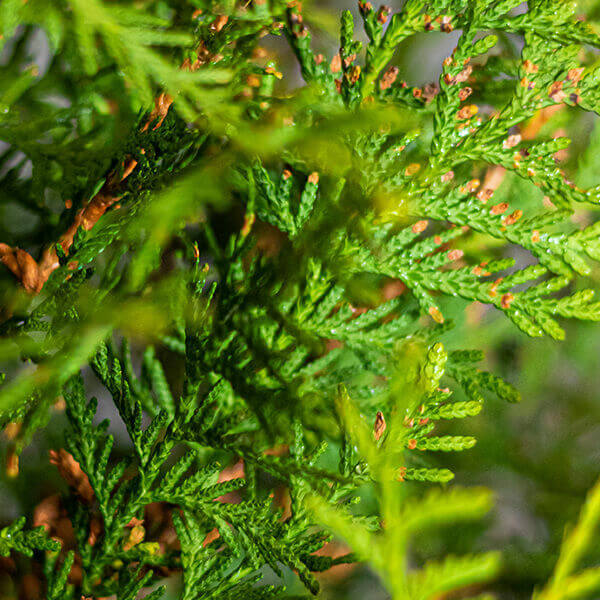Hedge Plants For Texture
Boost your garden's appeal with lush hedge varieties such as Yew (Taxus), Thuja, Laurel, Photinia, and Bamboo, commemorated for their structural integrity and ecological advantages.
Yew and Thuja offer evergreen protection and winter strength, while Laurel offers fast development and broad, fragrant leaves.
Photinia includes seasonal charm with its dynamic red foliage, and Bamboo provides a low-maintenance, serene ambiance.
These hedges enhance air quality, reduce noise, and create tranquil, private areas.
Correct planting, spacing, and maintenance guarantee energetic development and environmental consistency.
Check out how these lush varieties can raise your garden's appeal and well-being.
Key Takeaways
Change Your Garden With Lush Hedge Ranges
- Select Yew for its thick, evergreen growth and unrivaled durability.
- Go with Laurel for its quick growth and broad leaves, guaranteeing fast personal privacy.
- Pick Photinia for its vibrant seasonal foliage, which turns a striking dark red.
- Utilize Bamboo for a low-maintenance, winter-hardy hedge with aesthetic appeal.
- Space plants 2-3 per meter and prune routinely for optimum development and health.
Popular Hedge Plants
When changing a garden with lush hedge varieties, it's important to consider popular hedge plants such as Yew, Thuja, Laurel, and Photinia due to their distinct attributes and advantages.
Yew (Taxus) is extremely respected for its durability and thick, green development, making it a prime option for sustaining landscapes.
Thuja is kept in mind for its evergreen foliage and robust winter season strength.
Photinia includes seasonal vibrancy with red leaves that darken over time, creating vibrant visual appeal.
Laurel uses quick development and aromatic, broad leaves, perfect for fast personal privacy.
In Addition, Bamboo is an exceptional option for atmosphere, providing a low-maintenance, winter-hardy choice that improves the garden's aesthetic with its stylish, swaying canes.
These selections cater to a range of horticultural requirements and choices.
Benefits of Garden Hedges
Garden hedges offer a wide range of benefits, making them a valuable addition to any landscape. These natural barriers are cost-effective to carry out and supply considerable wind security, enhancing air circulation and adding to sound reduction. The thick foliage of hedges like Thuja and Beech makes sure privacy by obstructing exposure, creating a remote and peaceful environment.
Hedges also play a crucial function in microclimate policy, providing a steady environment that promotes plant development and lessens temperature variations. Their elaborate leaf structures filter toxins, improving air quality and adding to a much healthier garden ecosystem.
Moreover, hedges stand out in sound decrease, taking in and deflecting acoustic waves to lower ambient noise levels. This dual functionality of supplying both visual and acoustic personal privacy improves the overall tranquility and aesthetic appeal of any garden.
Planting and Upkeep Tips
For an effective hedge, meticulous preparation of the planting area is vital. Ensure the soil has appropriate pH and drainage to support strong root development.
Area the plants properly for the picked species. Water the hedge frequently during its preliminary growth phase, adjusting as needed with seasonal changes.
Implement a systematic bug control and illness prevention technique, utilizing chemical or natural treatments when required. Frequently inspect for aphids, mites, and fungal infections.
Apply mulch to retain wetness and reduce weeds. Seasonal pruning promotes thick development and air flow, vital for plant health.
Following these standards will help you cultivate a vibrant, well-kept hedge that enhances the beauty of your garden.
Spacing and Trimming Standards
Spacing and Cutting Standards
Appropriate spacing and trimming are essential for cultivating healthy, visually appealing hedges. Adequate spacing makes sure each plant gets sufficient nutrients, light, and air flow.
Follow these standards for ideal hedge upkeep:
- Spacing: Position hedge plants 2-3 plants per meter to motivate robust growth.
- Pruning Strategies: Regular pruning is essential for keeping wanted hedge height and shape. Trim new development in summer and cut back older wood during winter season.
- Seasonal Care: Change trimming schedules and techniques according to seasonal requirements to make sure plant health.
- Hedge Height: Routinely monitor and cut to maintain the wanted hedge height and accomplish uniform looks.
Following these actions will ensure your hedge flourishes, enhancing both the appeal and functionality of your garden.
Picking the Right Hedge
Picking the Right Hedge
Choosing the appropriate hedge involves examining aspects such as mature height, foliage density, and environmental strength. Effective hedge plant selection needs understanding each species' development characteristics and site-specific flexibility.
For instance, Yew (Taxus) offers outstanding longevity and thick development, while Thuja is notable for its winter season strength. In addition, thinking about maintenance requirements is crucial; fast-growing types like Laurel or Privet demand routine trimming, whereas low-maintenance alternatives like Bamboo or Ivy might be more effective for those seeking very little upkeep.
Ecological aspects such as soil type, light accessibility, and wetness conditions ought to also direct the selection process. This mindful approach guarantees the chosen hedges will flourish, supplying both functional and visual advantages to the garden landscape.
Shipment and Planting Guidance
To guarantee your hedge plants thrive, they ought to be provided by specialized carriers and planted quickly upon arrival.
Follow these necessary steps for effective planting:
- Soil Preparation: Enrich the soil with raw material to enhance drain and nutrient content.
- Planting Depth: Create a trench twice the width and equivalent to the depth of the root ball.
- Watering Strategies: Water thoroughly after planting, keeping the soil consistently damp but not filled.
- Mulching: Use a layer of mulch to maintain moisture and reduce weeds.
Consumer Assistance and Service
Given the crucial role of timely support in horticultural pursuits, our consumer assistance team is available six days a week through telephone, email, and social media to provide professional recommendations and quickly attend to any issues. Their devotion to fast action times makes sure consumer satisfaction by resolving inquiries connected to plant health, ideal planting techniques, and maintenance schedules.

-----------------
Within 48 hours
This comprehensive support group, strengthened by an outstanding 9.3/ 10 consumer rating, highlights our commitment to enhancing the gardening experience for every client.
Often Asked Questions
For How Long Does It Consider Hedge Plants to Develop?
Hedge plants normally need one to 3 years to end up being completely established, with the precise duration varying by species and growing conditions.
Effective care during this critical duration is necessary for robust development. Constant watering, watchful weed control, and suitable fertilizer application are critical in promoting strong root development.
For example, fast-growing types like Laurel might develop quicker, while slower-growing varieties such as Yew may take longer. Thorough upkeep speeds up the establishment process, resulting in healthy and thick hedges.
What Are the Finest Hedge Plants for Privacy?
The question of the finest hedge plants for personal privacy involves evaluating evergreen and deciduous options.
Evergreen hedges like Thuja, Laurel, and Cypress supply year-round protection, ensuring constant personal privacy.
In contrast, deciduous hedges such as Beech offer seasonal personal privacy, shedding leaves in chillier months.
Key upkeep suggestions for privacy hedges consist of regular cutting, fertilizing in spring, and appropriate spacing-- generally 2 to 3 plants per meter.
Additionally, constant watering and diligent weed elimination are essential for promoting healthy, thick development.
Can Hedge Plants Attract Wildlife to My Garden?
Yes, hedge plants can bring in wildlife to your garden by offering essential advantages like shelter, food, and nesting sites, therefore boosting local biodiversity. For circumstances, yew, holly, and laurel are outstanding for attracting birds, while ivy supports a range of bugs.
Nevertheless, it is necessary to keep in mind that there are some drawbacks, such as increased upkeep to handle pests and routine upkeep. Carefully picking and maintaining hedge ranges can assist balance these disadvantages and advantages, ultimately promoting a lively and sustainable community in your garden.
Exist Any Blooming Hedge Plants Available?
Yes, there are flowering hedge plants available that can improve the appeal of your garden.
For example, Elaeagnus, likewise known as Olive Willow, produces fragrant white flowers in the fall, including a touch of elegance.
Photinia, another popular option, showcases lively red leaves that mature into a rich green, producing a vibrant visual result throughout the seasons.
To ensure these plants flourish, it's vital to practice correct pruning methods and seasonal upkeep, such as cutting brand-new development in the summer and cutting down in the winter season.
These procedures will help keep the health and aesthetic appeal of your flowering hedges.
How Do I Prevent Insects in My Hedge Plants?
To prevent insects in hedge plants, utilize natural insect control techniques and keep correct hedge care. Present beneficial insects like ladybugs, which prey on harmful pests, to create a balanced ecosystem.
Regularly inspect your hedges for indications of problem and quickly eliminate any affected parts to prevent Additional hints the spread. Ensure the health of your hedges by using balanced fertilizers and providing adequate water.
Utilize mulching to maintain soil wetness and appropriate spacing to decrease plant stress and promote robust growth. These practices jointly assist in lessening insect issues and keeping a healthy hedge.
Conclusion
In essence, picking the right hedge varieties such as Yew, Thuja, and Laurel can change any garden into a serene sanctuary. These plants offer year-round greenery, boost visual appeal, and offer useful advantages like noise decrease and wind security.
Proper planting strategies, precise spacing, consistent watering, and seasonal cutting are crucial for optimal growth.
Dependable shipment services and professional customer assistance guarantee a seamless experience from purchase to planting, making it easier than ever to elevate your outside area.
Garden hedges offer a plethora of advantages, making them a valuable addition to any landscape. These natural barriers are economical to implement and supply significant wind defense, enhancing air blood circulation and contributing to noise decrease. The dense foliage of hedges like Thuja and Beech makes sure privacy by blocking visibility, producing a remote and serene environment.

Pruning Methods: Regular pruning is necessary for keeping preferred hedge height and shape. Trim brand-new growth in summer and cut back older wood throughout winter.